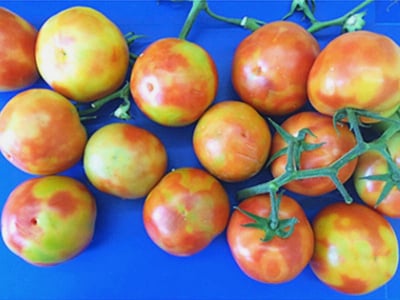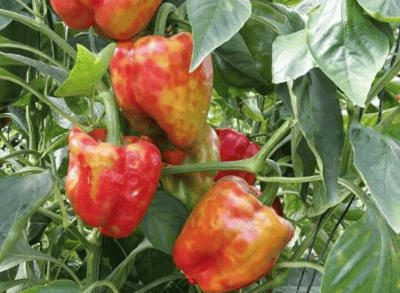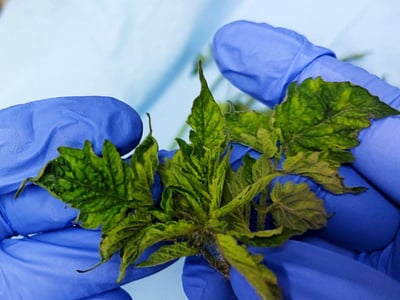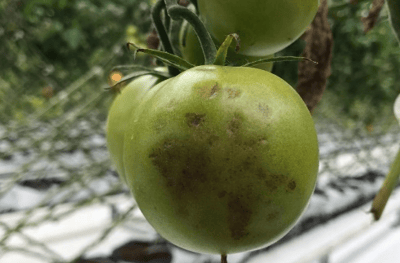.png)
Tomato brown rugose fruit virus (ToBRFV) is a National Priority Plant Pest that affects tomato, capsicum, and chilli crops. It poses a serious biosecurity risk to Australia’s vegetable industry.
ToBRFV was first detected in Australia in August 2024 in the Northern Adelaide Plains, South Australia. In January 2025, it was also detected on a single property in Victoria, linked to the direct movement of tomato seedlings from South Australia. These were the first confirmed detections of ToBRFV in Australia.
As of today, NSW and ACT remain free of ToBRFV. However, the situation remains dynamic, and ongoing surveillance and control efforts are in place to protect the region.
On 29 May 2025, the National Management Group (NMG) determined that eradication is no longer technically feasible. Australia has now shifted to a long-term management approach, focusing on containment and reducing spread through strict biosecurity practices.
NSW Biosecurity Control Order
To reduce the risk of ToBRFV entering NSW, the NSW Department of Primary Industries (DPI) has issued the Biosecurity (Tomato Brown Rugose Fruit Virus) Control Order (latest version from September 2024). This Control Order regulates the movement of risk items—including tomatoes, capsicums, and chillies—from infected properties into NSW.
Key points:
- Properties linked to infected sites must comply with testing and surveillance requirements.
-
Unlinked properties can continue trading, provided produce is clearly labelled with the name and postcode of the nearest town where it was grown.
ToBRFV Identification
ToBRFV is a plant virus (Tobamovirus) of tomatoes and capsicums.
- In tomatoes, leaves show symptoms of discolouration, mosaic and mottling patterns or reduced leaf size. The tomato fruit presents yellowing or brown areas and wrinkled (rugose) skin. Fruit may also be deformed and have an irregular maturation.
- In capsicums, symptoms include leaf deformities, yellowing and mosaic patterns. The capsicum fruit are deformed, with visible yellowing or brown areas or green stripes. Different plant varieties can present different symptoms.




ToBRFV is easily spread through:
- infected seed, plants for planting, grafts and cuttings
- direct plant to plant contact, including grafting
- touch transmission by handling contaminated tools, gloves, equipment, surfaces, and clothing
- transmission in seeds and irrigation water.
The virus can survive in seeds, plant debris, and contaminated soil for months. Once a crop is infected, the only control action is destroying all affected plants and material.
The process of plant destruction and decontamination can take several weeks depending on the size of the property.
Some weeds, including black nightshade, silverleaf nightshade, and buffalo bur are regarded as hosts for ToBRFV. Potatoes are not known hosts and eggplant is unlikely to host or be affected by the virus.
The virus poses no threat to human health, and it is not a food safety risk. Restrictions are put in place to protect other producers from the impacts on crop yields and marketability.
What should I do if I suspect ToBRFV?
Tomato brown rugose fruit virus is a notifiable plant disease.
All notifiable plant pests and diseases must be reported within 1 working day. You can report notifiable plant pests and diseases by one of the following methods:
- Call the Exotic Plant Pest Hotline 1800 084 881 (NATIONAL HOTLINE)
- Email biosecurity@dpi.nsw.gov.au with a clear photo and your contact details
- Complete an online form
Recommended Biosecurity Measures for Members
NGINA encourages all members to:
- Maintain hygiene protocols: Disinfect tools, equipment, surfaces, and worker footwear.
- Source virus-free material: Buy seeds and seedlings from reputable suppliers with virus-free certification.
- Conduct regular inspections: Watch for mosaic patterns, leaf yellowing, or fruit deformities.
- rain staff: Ensure all staff can recognise symptoms and understand hygiene best practices.
- Keep accurate records: Track plant material sources, batch numbers, and inspection results.
.png?width=100&height=100&name=Untitled%20design%20(50).png)